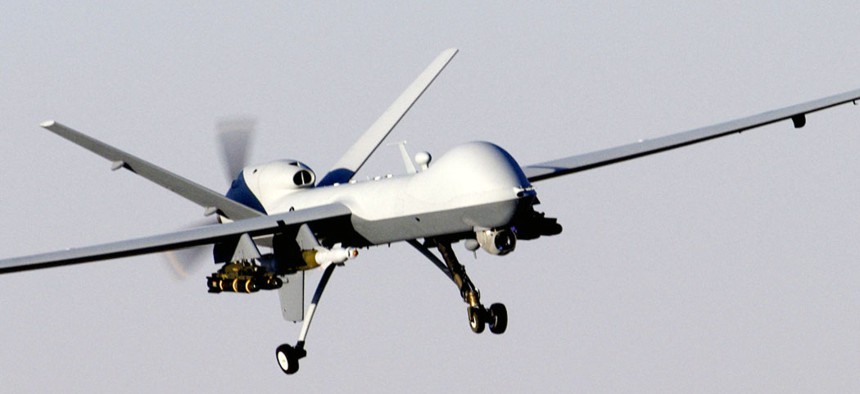Air Force looking for next-gen sensors
AFRL puts out a call for technologies to improve targeting via new electro-optical sensors for ISR and situation awareness.
The Air Force is looking to take advantage of the next generation of sensor technologies, which involves smaller devices with greater capabilities that can be used with a variety of aircraft, including manned, unmanned and autonomous vehicles, to improve targeting. The objective of a new presolicitation notice issued by the Air Force Research Laboratory expresses interest in advancing its portfolio of electro-optical sensors and related technology for intelligence, surveillance and reconnaissance (ISR), as well as targeting and situation awareness.
AFRL will host an industry day June 21 to answer questions and provide briefings to potential partners regarding the forthcoming broad agency announcement called Electro-Optical Combined Hyperspectral Imaging, Infrared Search and Track, and Long Range Imaging R&D.
Based upon the language in the brief notice, the government will be holding its cards close to the chest and not disclosing many details. Operations security will be applied for the lifecycle of a potential contract.
AFRL says contractors will be required to deliver all hardware, software and associated data developed and utilized in the development of a potential contract. AFRL estimates a BAA will be released in the September or October.
The Air Force has released other notices recently to “re-define” both medium- and high-altitude ISR sensors that could be capable of detecting mobile targets and targets obscured by natural or man-made objects.
It is unclear what sizes or types of aircraft – other than the aforementioned manned, unmanned and autonomous aircraft – the Air Force is interested in developing sensors for. An Air Force spokesperson told Defense Systems that there is not any additional public information that can be released at this time.
The newly released Air Force small unmanned aerial systems flight plan notes how the miniaturization of sensors within the last few years have significantly increased the capabilities of small tactical systems. For example, the miniaturization of synthetic-aperture radar – which is capable of imaging objects at any time of day or night and in environments that impair cameras such as rain, cloud cover or fog – is now employed on the 45-pound Scan Eagle made by Boeing subsidiary Insitu. The flight plan is hopeful that, despite continued size, weight and power concerns, a combination of technology advancements and concept of operations innovation can reduce these limitations on small systems that are increasingly in demand.
“[S]ensor payloads that once weighed more than most SUAS platforms have been miniaturized to only a few pounds with capabilities similar to their much larger variants,” the plan said. The document noted that a prioritized sensor roadmap would hone in on research and development efforts to meet current and future gaps.
NEXT STORY: Navy says hit me again with Blackjack UAS





